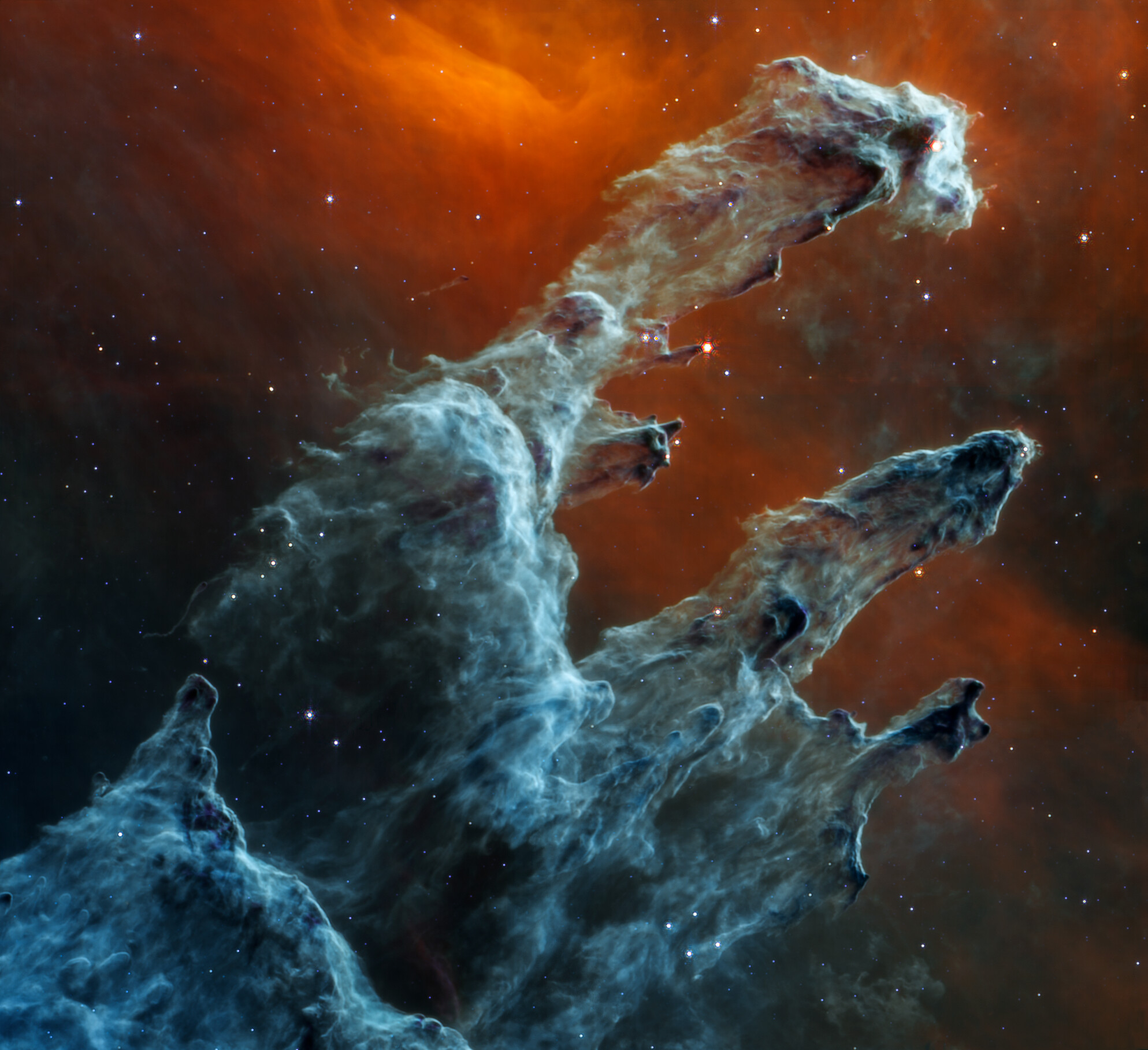Tour the famous 'Pillars of Creation' with gorgeous new 3D views from Hubble and JWST (video)
"With this new visualization, everyone can experience this rich, captivating landscape in a new way."
In 1995, the Hubble Space Telescope released images of the Pillars of Creation — stunning effervescent clouds of interstellar dust and gas, the place where stars are born.
Now, combining data from Hubble and the James Webb Space Telescope, NASA has released a gorgeous 3D visualization of the cosmic structures in both visible and infrared light.
"By flying past and amongst the pillars, viewers experience their three-dimensional structure and see how they look different in the Hubble visible-light view versus the Webb infrared-light view," principal visualization scientist Frank Summers said in a statement.
"The contrast helps them understand why we have more than one space telescope to observe different aspects of the same object," he continued.

The Pillars of Creation, which lie about 5,700 light-years from Earth, are composed of cool molecular hydrogen and dust. Due to strong winds and radiation from young nearby hot stars, the pillars are starting to get stripped of their contents. Long, finger-like structures can be seen emerging from the top of the pillars, which are larger than our own solar system.
Inside these structures, hydrogen and dust is gravitationally collapsing into new, infant stars. These new stars will add to the continued dispersion of materials within the pillars. The tallest of the pillars spans 3 light-years from top to bottom — three-quarters of the distance between the sun and our closest star.
The newly released video is based on observational data gathered for a study authored by Anna McLeod from the University of Durham in England, who also worked as a scientific advisor for the visualization project.
Get the Space.com Newsletter
Breaking space news, the latest updates on rocket launches, skywatching events and more!

"When we combine observations from NASA's space telescopes across different wavelengths of light, we broaden our understanding of the universe," said Mark Clampin, Astrophysics Division director at NASA Headquarters in Washington.
"The Pillars of Creation region continues to offer us new insights that hone our understanding of how stars form. Now, with this new visualization, everyone can experience this rich, captivating landscape in a new way," Clampin added.
Throughout the visualization, viewers can catch glimpses of stars at different stages of formation. For example, at the top of the central pillar, viewers can see an embedded infant protostar, which is bright red when seen in infrared light. Close to the top of the left pillar is a diagonal jet of material being ejected from a newborn star, though viewers can't see the star itself. And at the end of the left pillars' "fingers," viewers can see a blazing newly formed star.
Join our Space Forums to keep talking space on the latest missions, night sky and more! And if you have a news tip, correction or comment, let us know at: community@space.com.

Conor Feehly is a New Zealand-based science writer. He has earned a master's in science communication from the University of Otago, Dunedin. His writing has appeared in Cosmos Magazine, Discover Magazine and ScienceAlert. His writing largely covers topics relating to neuroscience and psychology, although he also enjoys writing about a number of scientific subjects ranging from astrophysics to archaeology.









